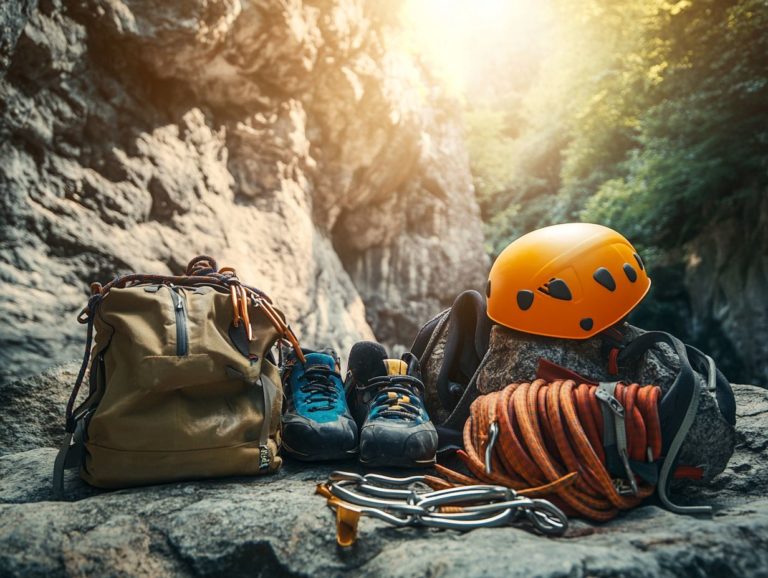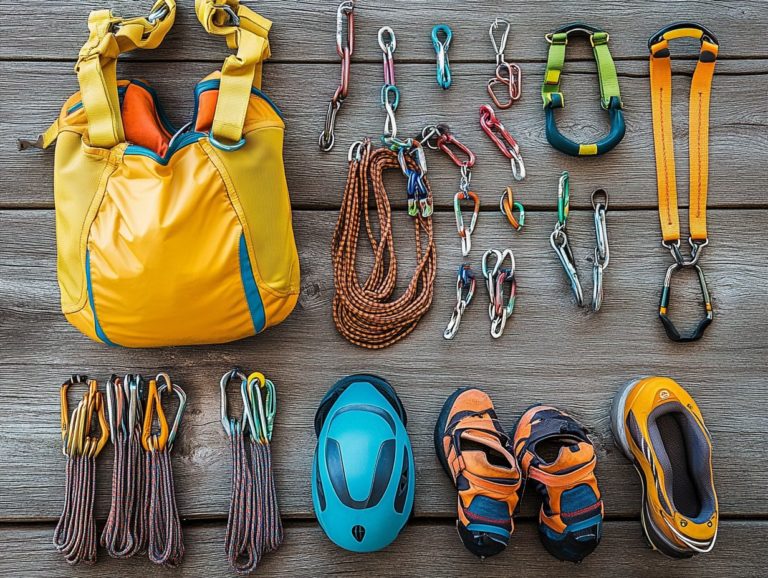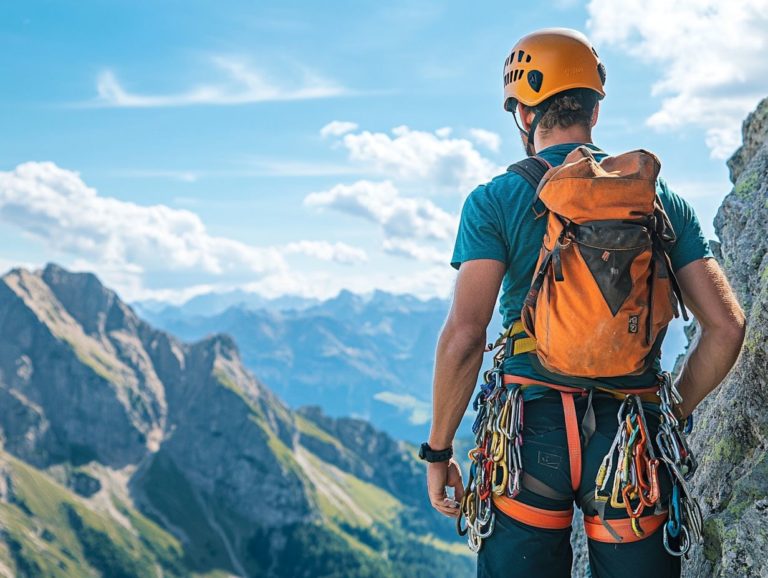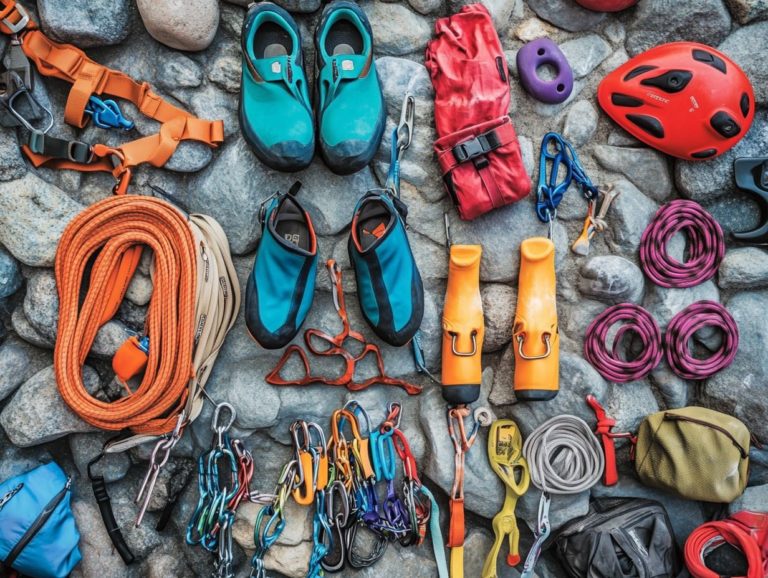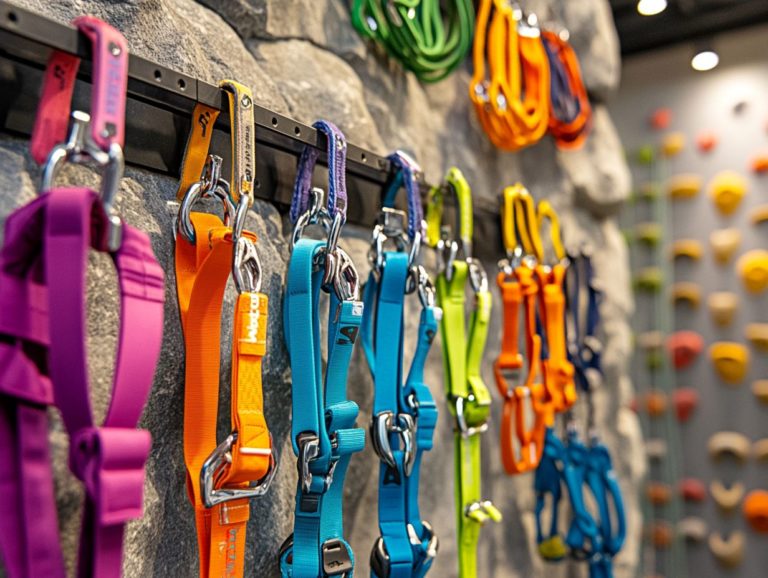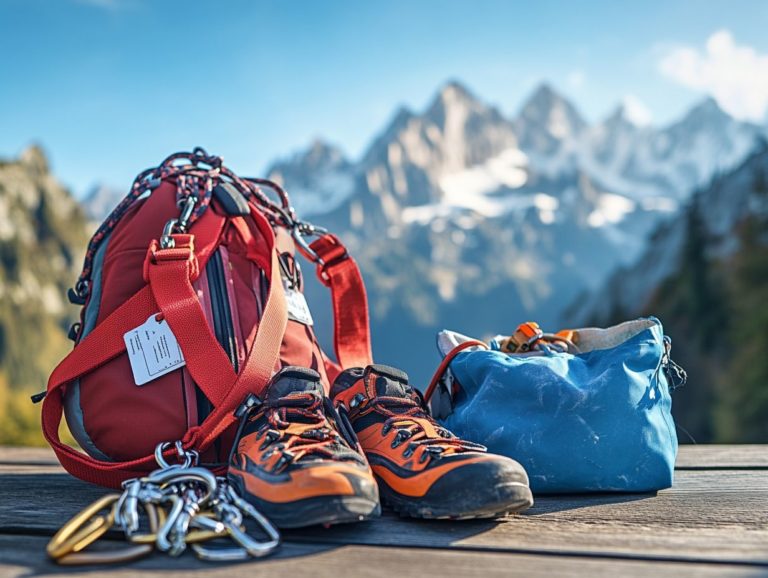The Evolution of Climbing Gear Over the Years
Climbing gear has come a long way. It has evolved from simple beginnings to advanced equipment that greatly improves safety and performance.
This article invites you to delve into the rich history of climbing tools, starting from the early innovations that laid the foundation for today s cutting-edge gear. You ll explore the various types of modern equipment, discover the materials that make it both safer and lighter, and learn essential safety practices for climbers.
You will discover exciting possibilities for the future of climbing gear. Join us on an exciting journey through this evolution and its profound impact on the climbing community.
Contents
- Key Takeaways:
- The History of Climbing Gear
- Modern Climbing Gear
- Safety and Maintenance
- The Future of Climbing Gear
- Frequently Asked Questions
- What is the significance of studying the evolution of climbing gear over the years?
- When did the first climbing gear appear?
- How has climbing rope evolved over the years?
- What were some key inventions that revolutionized climbing gear?
- How has climbing gear evolved to be more environmentally friendly?
- What can we expect to see in the future of climbing gear?
Key Takeaways:
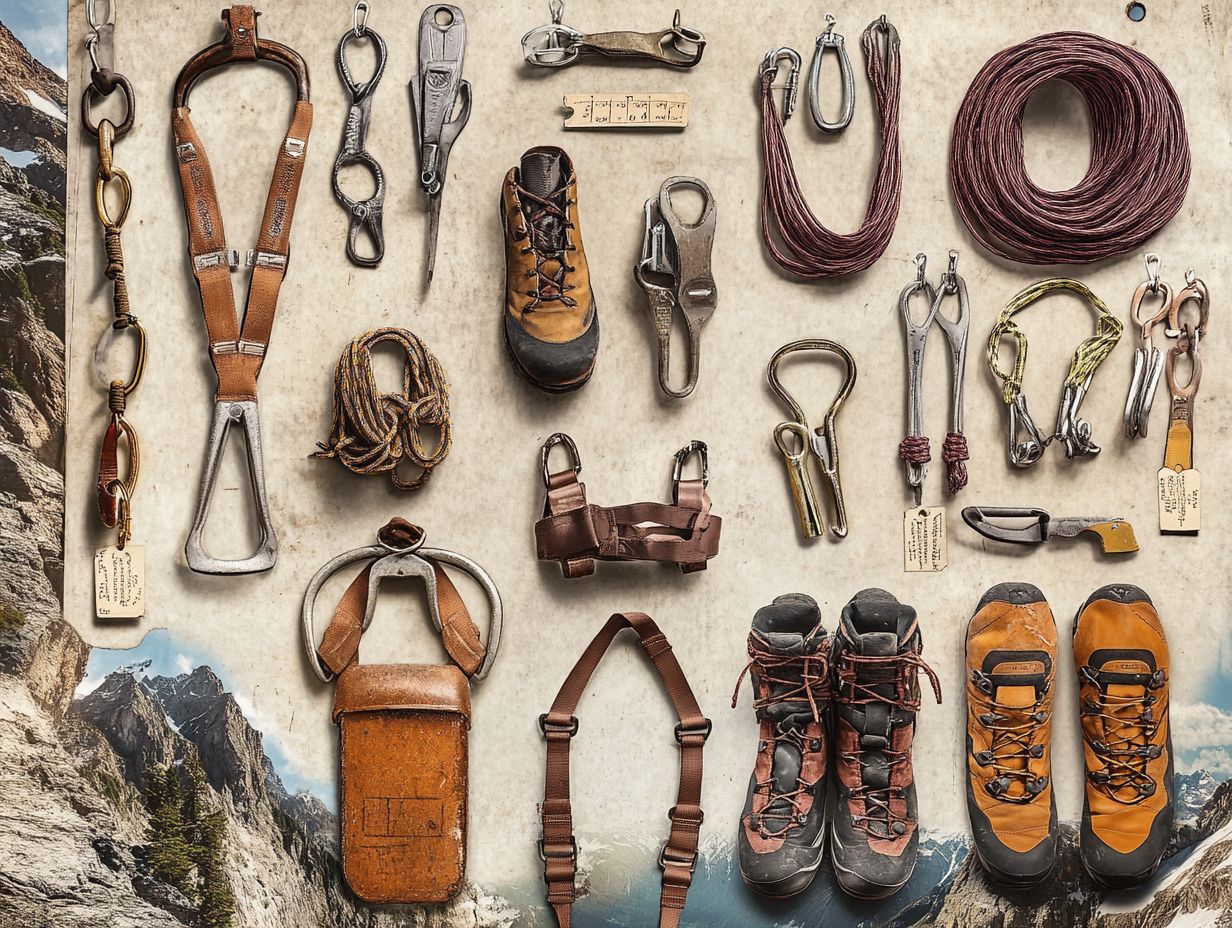
- Climbing gear has a rich history that spans centuries, evolving from basic tools to the advanced gear we use today.
- Modern climbing gear utilizes a variety of materials and advanced technology to enhance performance and safety.
- Proper usage and maintenance are essential for reducing common risks associated with climbing gear, and the future holds even more possibilities for innovation and improvement.
The History of Climbing Gear
The history of climbing gear unfolds as a captivating narrative, illustrating the evolution of tools and technologies that have shaped the sport of rock climbing. It all begins with early innovations, spearheaded by pioneers such as Jim Erickson, and takes root in iconic locations like Eldorado Springs Canyon in Colorado and Devil s Lake in Wisconsin.
Here, climbers embarked on a journey of experimentation with various gear, striving to enhance both their experiences and safety on the rock.
Early Tools and Equipment
Early on in your climbing journey, you ll find that essential tools like Chrome-Moly pitons and aluminum carabiners were essential tools for both your safety and your success as you tackled those formidable routes.
These pioneering innovations were meticulously designed to secure you to the rock face, ensuring you could ascend with confidence while minimizing the risk of falls. The strength and durability of Chrome-Moly pitons allowed you to place them securely in cracks and seams, providing reliable anchoring when it mattered most.
Meanwhile, aluminum carabiners transformed the way you clip and unclip gear, making the entire climbing process more efficient and seamless.
As time marched on, advancements such as dynamic ropes, which are designed to stretch and help absorb the energy during a fall, and quickdraws took center stage, further enhancing safety and efficiency in the sport. This evolution of hiking gear over the years not only improved your performance but also laid the groundwork for contemporary technologies like cam anchors and harnesses, which are now staples in the climbing community.
By understanding these early tools, you can appreciate the rich history of climbing safety equipment and recognize the remarkable progress made since those formative days.
Innovations and Advances
Innovations and advances in climbing gear have truly transformed your climbing experience, introducing cutting-edge materials and technologies that enhance both your performance and safety.
The evolution of nylon ropes has dramatically boosted their strength and flexibility, enabling you to push your limits with newfound confidence. To delve deeper into this evolution, check out the history of climbing equipment. Harnesses have undergone significant upgrades as well, featuring ergonomic designs and lightweight fabrics that elevate your comfort during those long ascents.
Moreover, today’s climbing shoes are engineered with specialized rubber compounds, delivering exceptional traction and precision across a variety of surfaces. These technological strides not only refine your individual climbing practices but also cultivate a stronger sense of community among climbers. For those looking to enhance their experience, exploring the top climbing gear for rock climbers can be incredibly beneficial.
As you connect with fellow enthusiasts through social media and climbing events, your shared experiences deepen, showcasing the transformative power of modern climbing technology.
Modern Climbing Gear
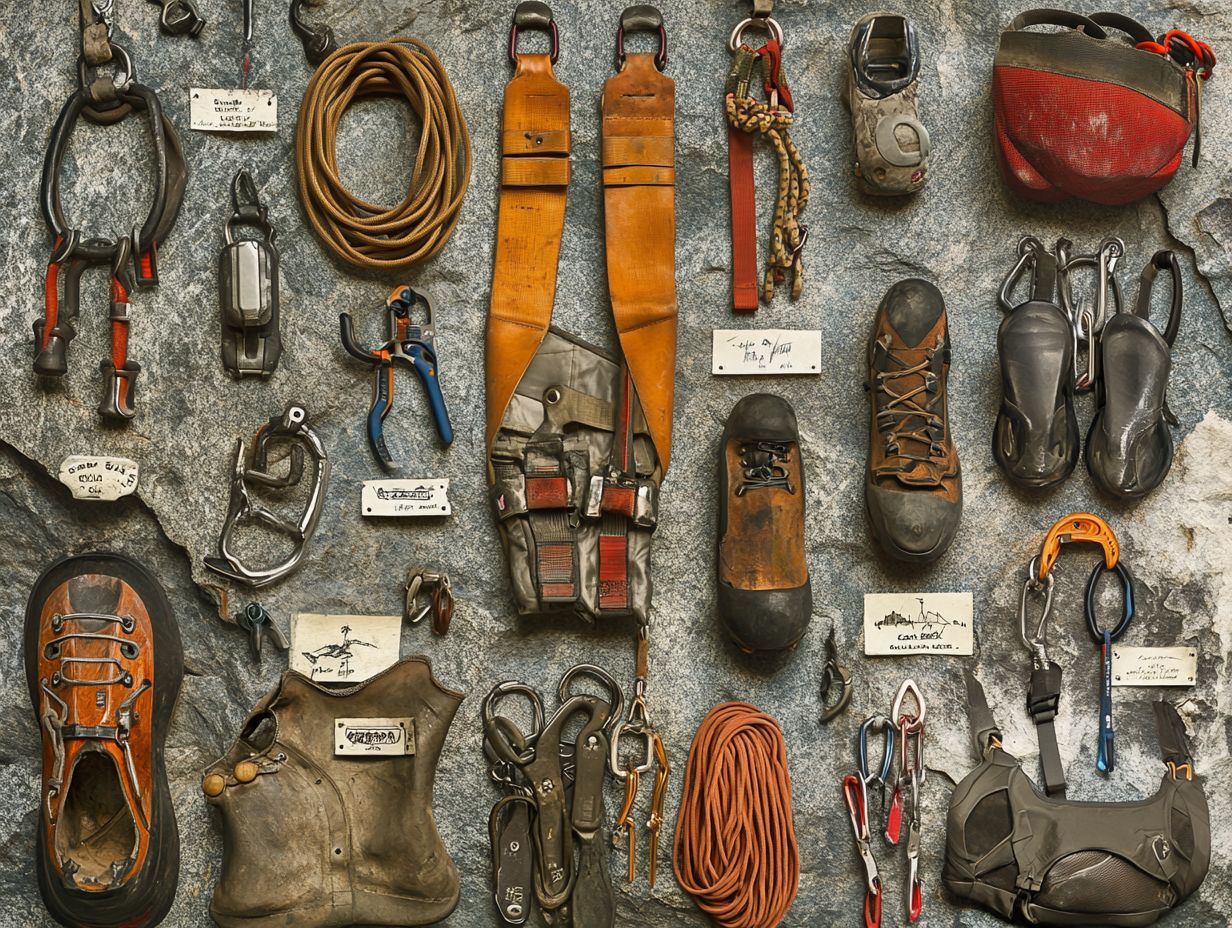
Modern climbing gear has transformed to meet the needs of diverse climbing styles. Now, you can find specialized equipment, including climbing packs and ropes, to boost your performance and safety.
This evolution empowers you to face challenges confidently, knowing you have top-notch tools at your disposal.
Types of Gear Used Today
Today’s climbing gear includes a wide range of equipment, from climbing shoes to robust ropes. Each piece is crucial for your safety and performance on different climbing routes.
Climbing shoes are designed for grip and support, helping you conquer steep ascents. Dynamic ropes absorb falls, reducing injury risks.
Harnesses and carabiners keep you secured to ropes and anchors. Choosing the right gear for your environment be it indoor, bouldering, or alpine is essential for a safe adventure.
Materials and Technology
The materials in climbing gear, like nylon ropes and advanced composites such as Dyneema and Spectra, enhance durability. These materials offer lightweight construction and strength, crucial for climbers like you.
Dyneema s strength reassures you that your gear can handle tough situations. Modern manufacturing often surpasses safety standards, enabling you to push your limits.
The incorporation of technologies like moisture-wicking fabrics and anti-corrosive coatings improves reliability. It’s amazing how far climbing gear has come through innovation!
Safety and Maintenance
Your climbing safety and gear maintenance are key. This focus not only boosts performance but also helps you tackle challenges with confidence.
Proper care extends your gear s life. Clean ropes regularly and store them in a cool, dry place to protect them from UV rays and moisture.
Inspect harnesses for frays, especially in stitching and buckles. Check carabiners for damage and ensure locks work before each use.
Regular inspections after outings help catch wear early. This proactive approach ensures your safety on high-altitude adventures.
Proper Usage and Care
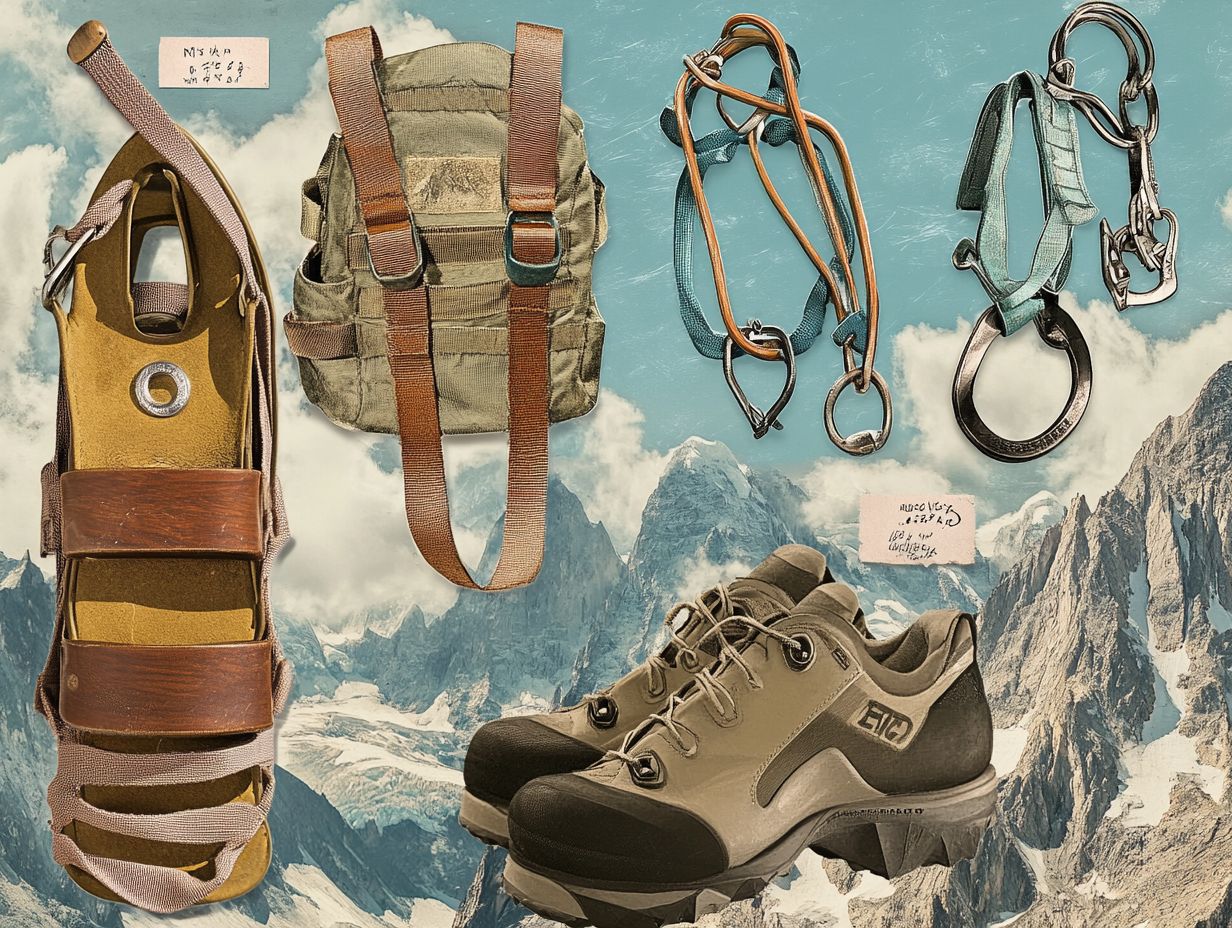
Proper usage and care of your climbing gear are essential for maintaining its integrity and ensuring your safety as you tackle challenging routes and environments.
Common Risks and How to Mitigate Them
Climbers face many risks during their adventures. These can greatly affect safety and performance.
Understanding these risks is crucial. Using effective strategies can improve your climbing experience. The climbing landscape is fraught with dangers, from equipment failure due to wear and tear to unexpected environmental hazards like rock slides or sudden weather shifts.
To navigate these challenges effectively, prioritize regular equipment inspections, invest in high-quality gear, and stay informed about the weather forecast before you set out.
Learning and practicing essential safety techniques such as correct ways to secure your climbing partner and communication protocols are crucial for protecting yourself and your climbing partners.
Fostering a deep understanding of these risks helps you climb with more confidence and far less anxiety.
The Future of Climbing Gear
Get excited! The future of climbing gear is packed with thrilling advancements that will boost your performance and safety, making climbing more accessible for everyone.
Predictions and Possibilities
Predictions for the future of climbing gear suggest a seamless blend of cutting-edge technology and innovative designs, all aimed at enhancing your climbing experience.
As manufacturers tap into new, high-tech materials, you’ll find gear that’s not just lighter and stronger but also remarkably durable. Imagine ropes and harnesses developed with nanotechnology, offering exceptional resistance to wear and tear—this means enhanced safety for you on your climbs. For those looking for the latest options, check out the most durable climbing gear of 2024.
Consider the potential of smart helmets equipped with augmented reality; these could transform how you navigate and maintain situational awareness, allowing you to evaluate routes in real time. With each new advancement, the climbing community will adapt practices to make the most of these tools, deepening your connection to your equipment and pushing the boundaries of the sport, as seen in the future of climbing gear technology.
Frequently Asked Questions
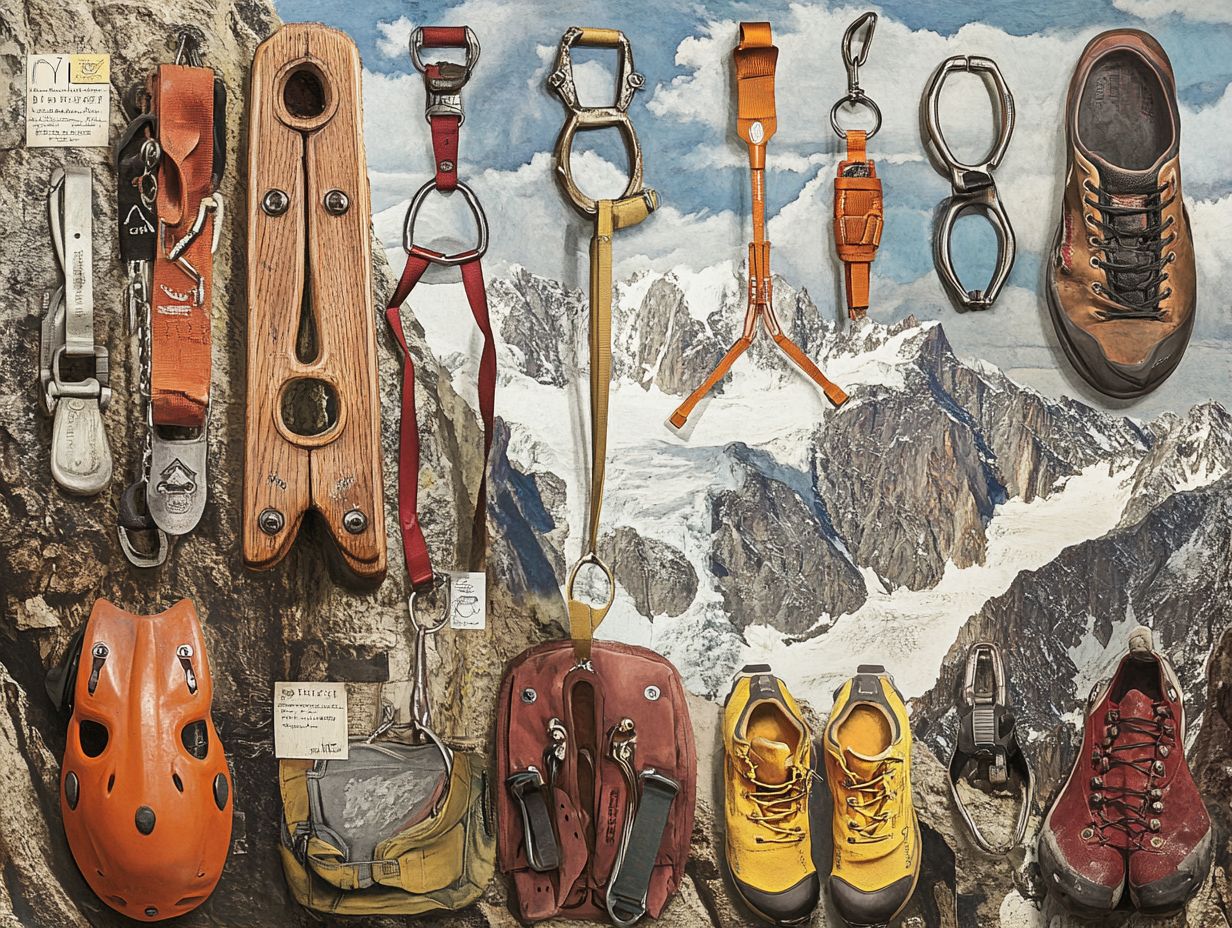
What is the significance of studying the evolution of climbing gear over the years?
The evolution of climbing gear is important because it helps us understand advancements in equipment that have made climbing safer and more efficient. This knowledge also allows us to appreciate the history of the sport.
When did the first climbing gear appear?
The first climbing gear appeared in the late 19th century, with the development of pitons metal spikes used to secure ropes in the rock. These were soon followed by the invention of carabiners, which allowed for easier attachment of ropes to the rock.
How has climbing rope evolved over the years?
Climbing ropes have undergone significant changes since their first appearance. They are now lighter, stronger, and more dynamic, thanks to materials like nylon and Kevlar. Modern climbing ropes also offer better shock absorption, making falls less dangerous for climbers.
What were some key inventions that revolutionized climbing gear?
Key inventions that revolutionized climbing gear include sticky rubber on climbing shoes in the 1950s, camming devices in the 1970s, and harnesses with padding and adjustable leg loops in the 1980s.
How has climbing gear evolved to be more environmentally friendly?
Recently, there has been a push towards creating more sustainable and eco-friendly climbing gear. This trend includes using recycled materials in production and developing gear that is more durable, reducing the need for frequent replacements.
What can we expect to see in the future of climbing gear?
The future of climbing gear is likely to involve continued advancements in technology, making equipment even lighter, stronger, and more efficient. We may also see a greater focus on sustainability and the development of new gear designed for various types of climbing.

